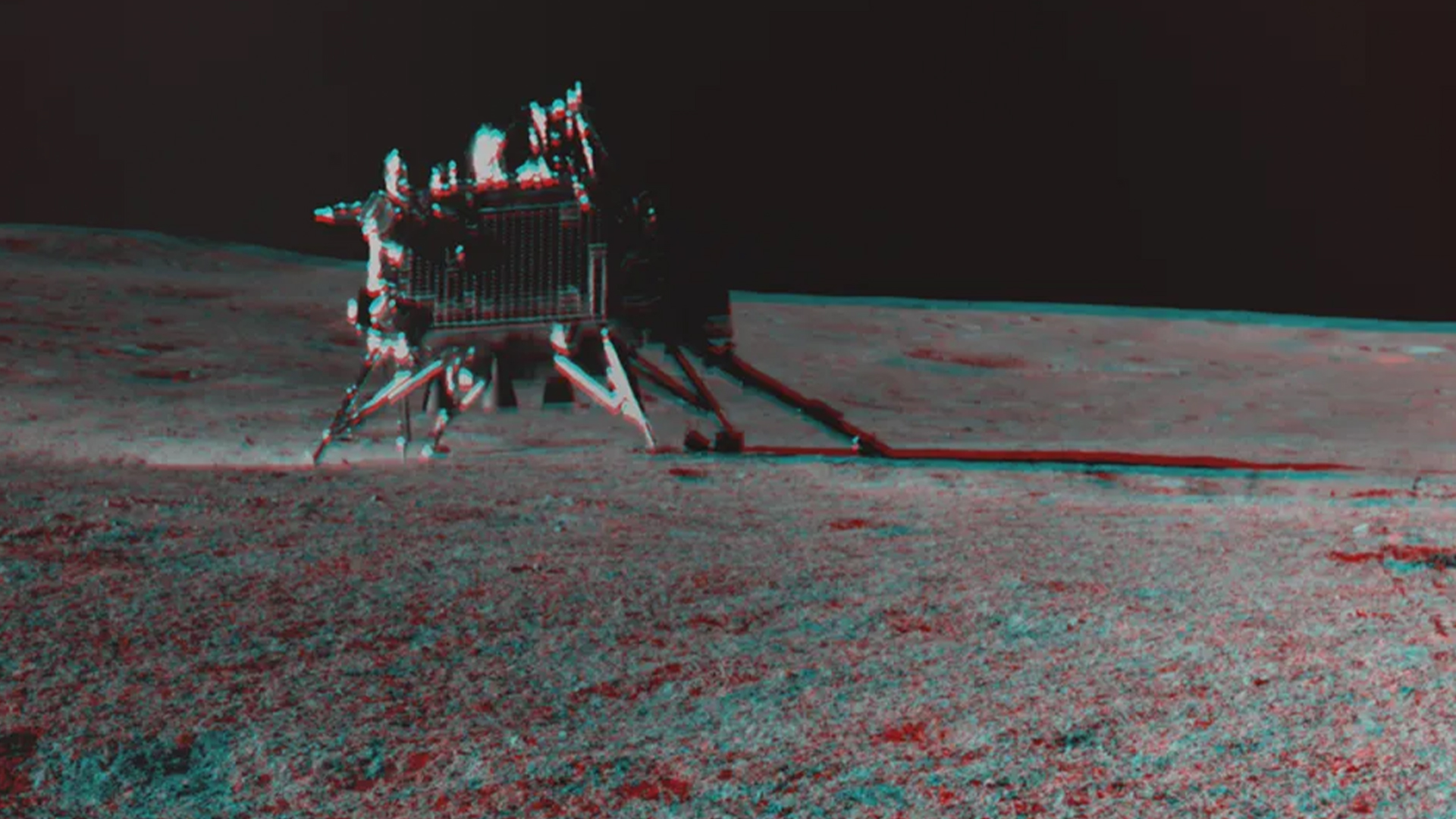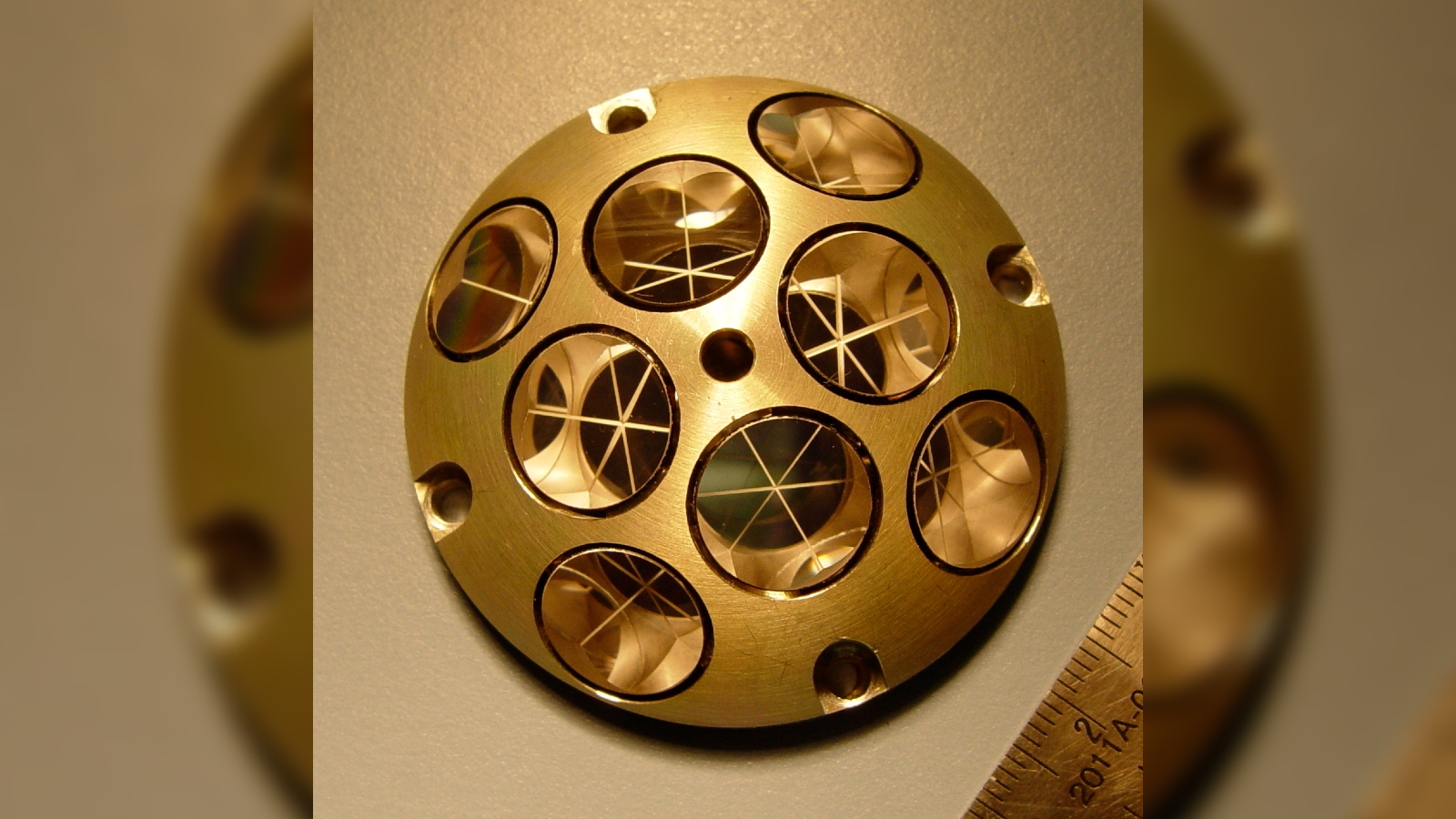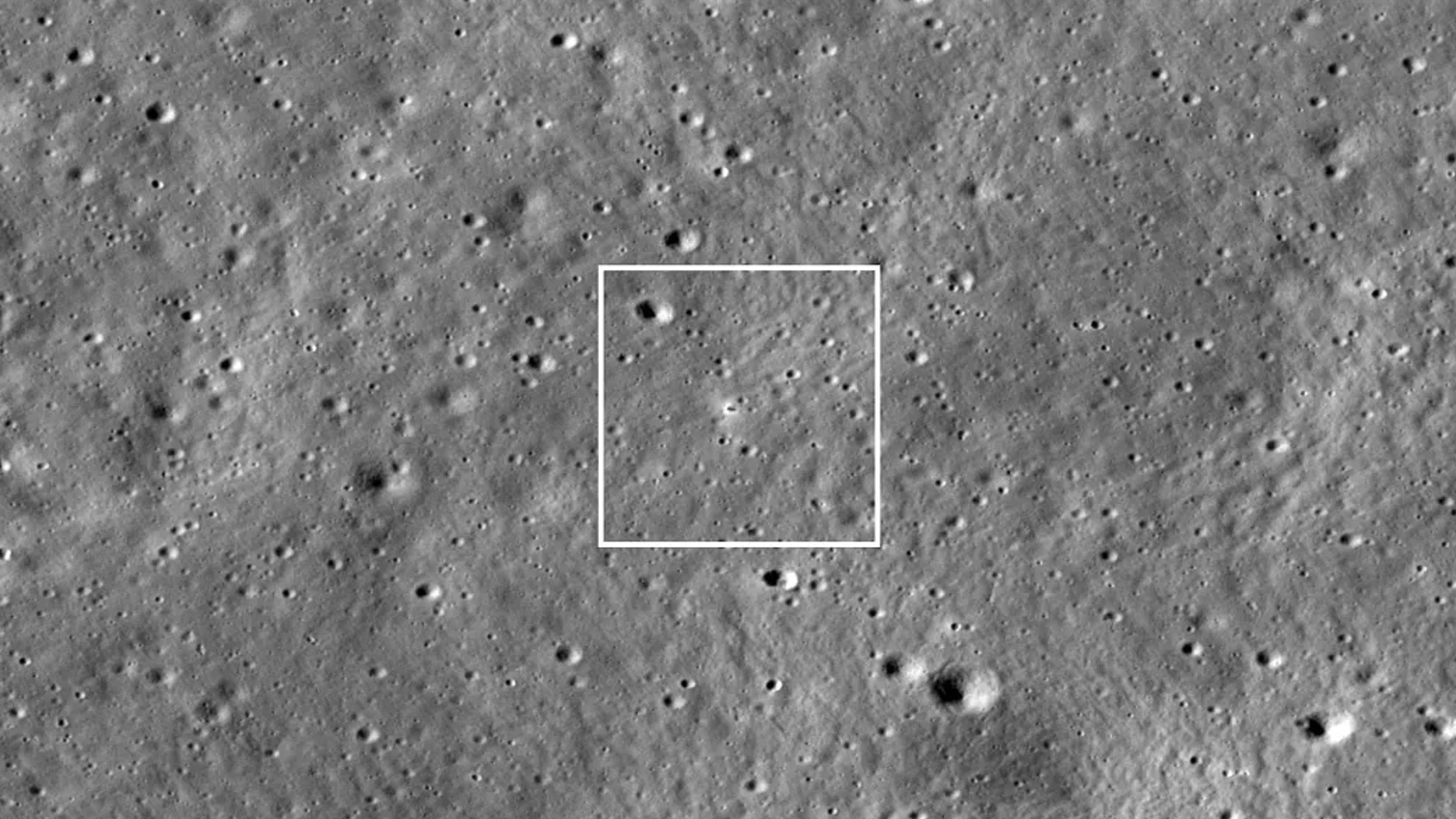
NASA has successfully bounced a laser beam off of an "Oreo-sized" mirror on India's historic lunar lander and back to the orbiting spacecraft that fired it. This feat is the first time that such a maneuver has ever been carried out, and it could help facilitate high-precision landings during future missions to the moon.
In August 2023, India became the fourth nation to land a spacecraft on Earth's largest satellite when the country’s Chandrayaan-3 mission deployed the Vikram lunar lander near the Manzinus crater in the moon's south pole region. The lander, which was also carrying the Pragyan rover, spent weeks collecting data on the moon — including valuable evidence of moonquakes — but failed to wake up after a scheduled power down in September. But the defunct lander is still of great interest to NASA.
Before the misssion began, the agency arranged to have a small, multi-sided mirror, known as a laser reflector array or retroreflector, attached to the lander. The 2-inch-wide (5 centimeters) device, which is made from eight quartz-corner-cube prisms set into a dome-shaped aluminum frame, is designed to reflect lasers to orbiting spacecraft from almost any incoming angle.
Ever since the lander went offline, NASA's Lunar Reconnaissance Orbiter (LRO), which is the only laser-armed spacecraft currently circling the moon, has repeatedly tried to bounce lasers off the retroreflector with no success. But on Dec. 12, 2023, after eight failed attempts, LRO finally hit the array from 62 miles (100 kilometers) away and received a laser ping in return.
The long-awaited success is an important proof-of-concept for NASA, which is planning to use more retroreflectors in future missions to the moon, including the upcoming Artemis missions.
"We've showed that we can locate our retroreflector on the surface from the Moon's orbit," Xiaoli Sun, a research scientist at NASA's Goddard Space Flight Center who led the mission, said in a statement. "The next step is to improve the technique so that it can become routine for missions that want to use these retroreflectors in the future."

This is not the first time scientists have bounced lasers off the moon. In the past, NASA has successfully reflected Earth-fired lasers off reflective panels that were left behind on the lunar surface during the Apollo missions. This has revealed that the moon is slowly moving away from Earth by about 1.5 inches (3.8 centimeters) every year.
However, the new retroreflectors were designed with a more practical use in mind. NASA plans to use the devices to help unmanned spacecraft land next to existing objects on the moon by being able to measure exactly how far away they are from the surface (based on how long it takes for the lasers to bounce back to the spacecraft).
This would be important for building future lunar bases and could also allow astronauts to land in complete darkness on the far side of the moon. Similar "precision markers" help incoming astronaut capsules and cargo pods to dock with the International Space Station's airlocks.
Related: 15 incredible images of Earth's moon

It took LRO multiple attempts to successfully reflect lasers off the Vikram lander because the orbiter was not designed with such precise maneuvers in mind. The spacecraft, which is currently operating 13 years past its original mission parameters, was designed to map the lunar surface. To do this, it fires bursts of thin laser lines toward the moon and measures how long it takes for them to bounce back to the spacecraft. But because these lines are spaced far apart, it made it hard to accurately hit such a small target.
Future spacecraft that target the retroreflectors will have more precise lasers and likely be firing them from much closer distances. So, in theory, they should be able to hit their tiny targets every time, according to NASA.
NASA is planning to put more retroreflectors on the moon to run similar experiments in the future. However, their last few attempts have not gone well.
One of their proposed retroreflectors was onboard the privately-owned Peregrine lunar lander, which recently burned up in Earth's atmosphere after suffering a catastrophic propellant leak shortly after launching on Jan. 8. Another was attached to Japan's SLIM lander, which successfully landed on the moon on Jan. 19 but may already be dead after a problem with its power source. (It is currently unclear if the retroreflector on the SLIM lander could still be used by NASA.)
These issues may have set back NASA's research into retroreflectors. But since the first manned Artemis mission has been delayed until 2026, they will likely get several more chances before those missions come around.







